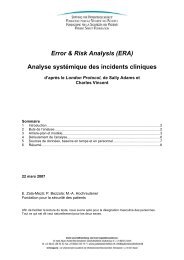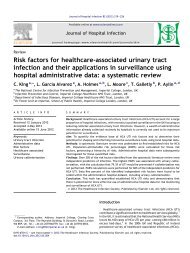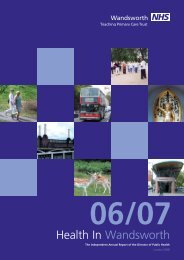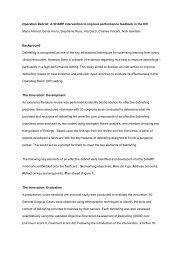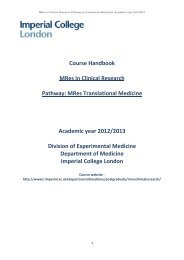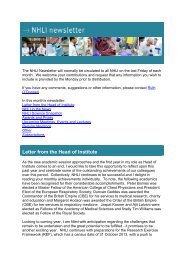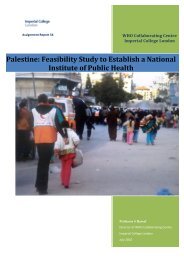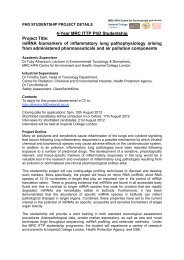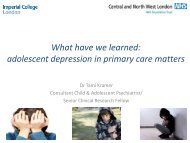QOF Plus Year 1 - Imperial College London
QOF Plus Year 1 - Imperial College London
QOF Plus Year 1 - Imperial College London
You also want an ePaper? Increase the reach of your titles
YUMPU automatically turns print PDFs into web optimized ePapers that Google loves.
Prevalence of conditionThe number of people in the England and Wales suffering with CVD (Coronary Heart Disease andStroke) amounts to over 3 million (Cooper et al., 2008). Lloyd-Jones et al. (1999) estimated thelifetime risk of developing CHD after the age of 40 to be 49% for men and 32% for women.Associated morbidity and mortalityCVD is the most common cause of death in the England and Wales. In 2005, CVD accounted for124000 deaths (1 in 3 deaths) in England and Wales (Cooper et al., 2008). CVD is an increasingcause of morbidity, resulting in ill-health and disability.Local contextCirculatory diseases are a major cause of hospital admissions in Hammersmith and Fulham.During 2006, 37% of deaths in Hammersmith and Fulham were caused by circulatory diseases(Zeuner D, 2008). Within Hammersmith and Fulham, the premature mortality rate fromcirculatory disease increases as deprivation increases, and 79% of the difference in rates can beexplained by deprivation (Zeuner D, 2008).NHS Hammersmith and Fulham has recently introduced a Local Enhanced Service (LES) toencourage practices to identify all patients on the practice list who are asymptomatic withoutdiabetes and without CVD whose 10-year risk of developing CVD (formally estimated usingcomputerised Framingham 1991 10-year risk equations) is 20% or greater, and to manage themin line with recommendations from NICE. Practices have already had Oberoi software installedwhich helps create a CVD at-risk register for patients aged 32 – 74 (age range is fixed bysoftware).It is proposed that this LES would be replaced by including indicators relating to CVD primaryprevention in <strong>QOF</strong>+. These indicators have been designed to reflect the recommendations madeby the recently updated 2008 NICE Guideline on Lipid Modification.The costing template accompanying the 2008 NICE Guideline on Lipid Modification estimates thatfor Hammersmith and Fulham, the number of adults without CVD aged 40 to 74 with a greaterthan 20% 10-year risk of CVD (using Framingham with adjustments as per NICE guideline) andwithout diabetes totals 7541.Review of evidence to support the proposed indicatorsThere is evidence for the effectiveness of statins in both primary and secondary prevention ofCHD events, strokes and combined major and vascular endpoints. (Cholesterol TreatmentTrialists’ Collaborators, Lancet, 2005). In the West of Scotland Coronary Prevention Study(WOSCOPS), a major primary prevention trial, statin therapy significantly reduced coronarymortality and relative risk for major coronary events (Shepherd J et al., 1995).There is also evidence that aspirin and angiotensin-converting enzyme (ACE) inhibitors reduce riskin asymptomatic patients at high risk of CVD (Hennekens, 1999; Yusuf et al., 2000). The NICEGuideline on Lipid Modification describes clear evidence that reduction in CVD risk can be22



